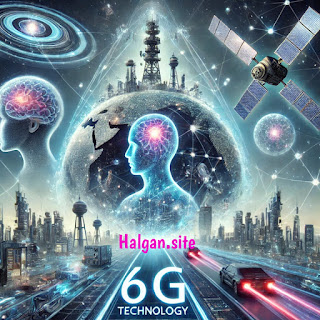5G vs. 6G: What’s the Difference, and Which One Will Be the Next Solution?
Introduction
Wireless technology has evolved dramatically over the past few decades, revolutionizing communication, business, and global connectivity.
The launch of 5G introduced ultra-fast speeds and low latency, enabling innovations like smart cities, autonomous vehicles, and the Internet of Things (IoT).
However, even before 5G has been fully adopted worldwide, research into 6G is already underway.
But what exactly differentiates 6G from 5G, and which one will dominate the future? This article explores their differences, advantages, and the industries they will impact.
The Evolution of Wireless Networks: From 1G to 6G
Before diving into the comparison, let’s take a look at the evolution of mobile network technology:
1G (1980s) – The first generation of wireless communication introduced analog voice calls but had poor quality and security.
2G (1990s) – Digital transmission was introduced, along with SMS and basic internet access.
3G (2000s) – Mobile internet became widely available, supporting video calls and faster browsing.
4G (2010s) – Broadband speeds enabled HD video streaming, online gaming, and app-based services.
5G (2020s) – Introduced ultra-fast speeds, low latency, and support for billions of connected devices.
6G (2030s and beyond) – Expected to revolutionize industries with speeds 100 times faster than 5G and AI-driven networks.
What Is 5G?
5G (Fifth Generation) is the latest standard in mobile networks, designed to enhance connectivity, improve efficiency, and enable real-time applications. Some of its key features include:
✅ Speed: Up to 10 Gbps—100x faster than 4G.
✅ Latency: Less than 1 millisecond—ideal for real-time operations.
✅ Capacity: Supports millions of devices per square kilometer.
✅ Efficiency: Uses less power per bit transmitted compared to 4G.
✅ Network Slicing: Creates multiple virtual networks within the same infrastructure.
Industries Benefiting from 5G
Smart Cities: Enables better traffic management, smart lighting, and efficient resource use.
Healthcare: Supports remote surgeries and real-time patient monitoring.
Autonomous Vehicles: Provides faster communication between vehicles and traffic systems.
Entertainment & Gaming: Enhances cloud gaming and VR experiences.
What Is 6G?
6G (Sixth Generation) is still in the research phase but promises even greater advancements, including:
✅ Speeds of up to 1 Terabit per second (Tbps) – 100x faster than 5G.
✅ Latency measured in microseconds – further reducing communication delays.
✅ AI-powered networks – enabling autonomous optimization of network resources.
✅ Integration with quantum computing, extended reality (XR), and holographic communication.
✅ Satellite-based coverage – providing seamless global connectivity.
Potential Applications of 6G
Holographic Telepresence: Live 3D holograms for business meetings and social interactions.
AI-Enhanced Automation: Smarter factories, self-optimizing robots, and predictive maintenance.
Brain-Computer Interfaces (BCIs): Direct communication between human brains and digital devices.
Seamless Global Internet Access: Using satellites and AI-driven infrastructure.
Key Differences Between 5G and 6G
Challenges of Implementing 6G
Although 6G promises revolutionary advancements, several challenges must be addressed:
1️⃣ Infrastructure Costs – Upgrading from 5G to 6G will require massive investment.
2️⃣ Spectrum Allocation – 6G will use higher frequencies, requiring new spectrum management.
3️⃣ Security & Privacy Concerns – More connected devices mean higher cybersecurity risks.
4️⃣ Global Standardization – Governments and tech companies must collaborate to ensure uniform implementation.
Which One Will Be the Next Solution?
While 5G is the current standard, it will remain relevant for years to come. However, 6G will unlock new possibilities, making futuristic applications a reality.
The transition will not be immediate, and both technologies will coexist for a while.
✅ Short-term (2025-2030): 5G will continue expanding worldwide.
✅ Mid-term (2030-2040): 6G will gradually replace 5G in advanced sectors.
✅ Long-term (Beyond 2040): 6G will dominate and pave the way for new innovations.
Industries requiring instantaneous data transmission—such as healthcare, space exploration, and AI-driven robotics—will likely benefit the most from 6G.
However, for everyday consumers and businesses, 5G will remain efficient and powerful for the foreseeable future.
Conclusion
The shift from 5G to 6G represents a major leap in wireless technology, promising ultra-fast speeds, near-zero latency, and AI-driven connectivity.
✅ 5G is the present – powering smart cities, IoT, and autonomous vehicles.
✅ 6G is the future – enabling brain-computer interfaces, quantum computing, and global AI-driven networks.
Businesses and consumers should stay informed about these developments, as the next revolution in connectivity is just around the corner.



